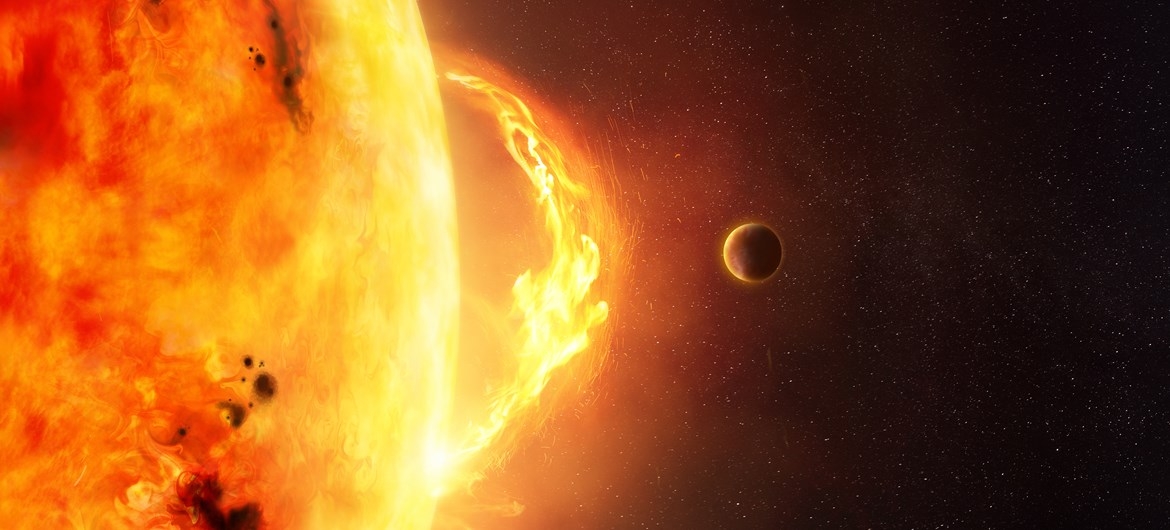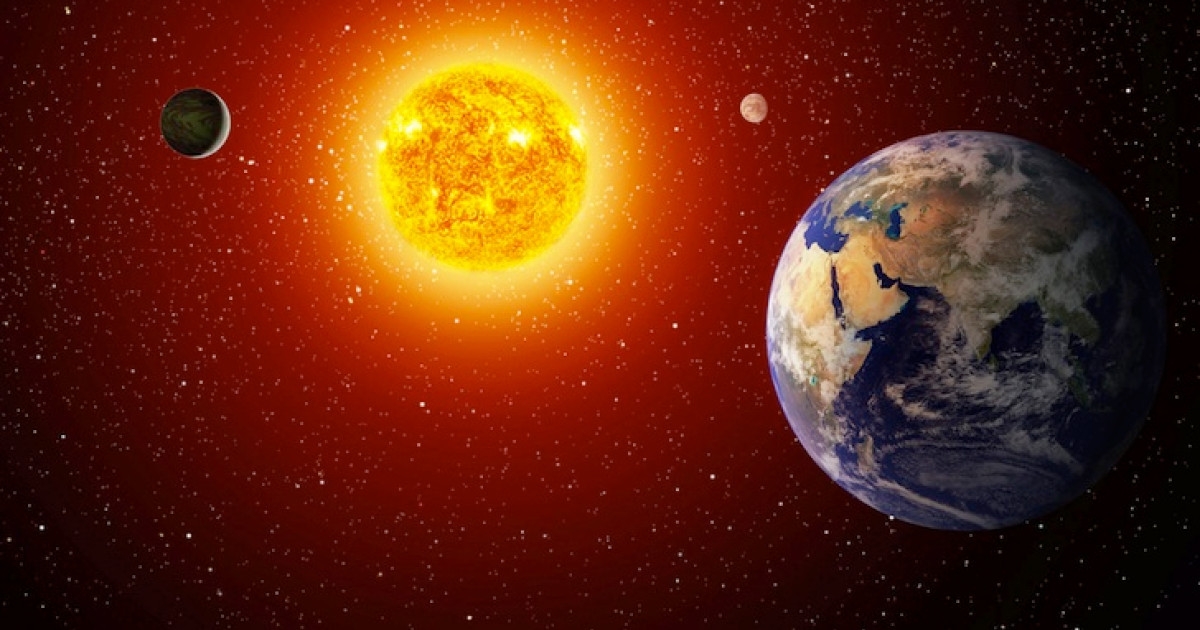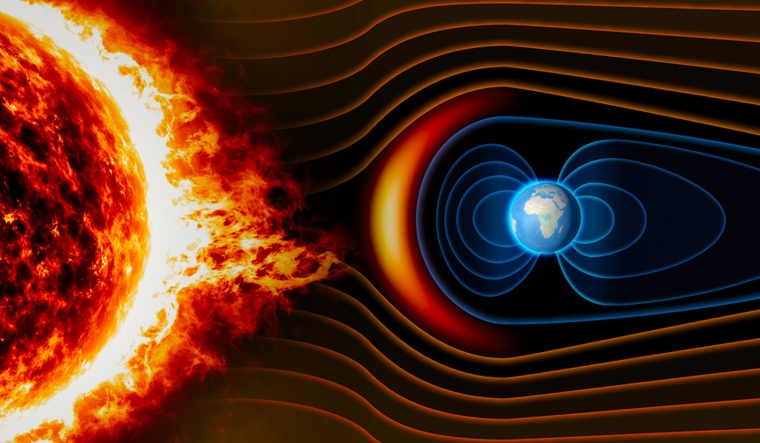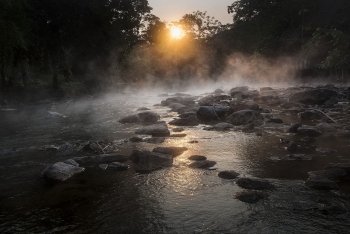Facts About The Sun: Top 12 Interesting Things
 |
| Photo: Fact Retriever |
What is the Sun?
The Sun is what is known as a main-sequence star; that is, a sphere composed primarily of the two gases hydrogen and helium such that certain conditions are met. The first condition is that it must have a mass falling within a certain range. Though debated, this range is generally accepted to be between approximately 1.4 x 1029 kg and 3.0 x 1032 kg. (This range is often described as at least 75 times the mass of Jupiter and no more than 150 times the mass of the Sun itself.) The second and most important condition is that nuclear fusion must be present. Nuclear fusion is the process whereby two lighter atomic nuclei join or “fuse” together to produce a heavier atomic nucleus. In the context of stars, hydrogen is the lighter and helium the heavier.
Here are the top 12 interesting facts about the Sun:
1. The Sun accounts for 99.86% of the mass in the solar system
It has a mass of around 330,000 times that of Earth. It is three-quarters hydrogen and most of its remaining mass is helium.
2. Over one million Earth’s could fit inside the Sun
If you were to fill a hollow Sun with spherical Earths, somewhere around 960,000 would fit inside. However, if you squashed those Earths to ensure there was no wasted space then you could fit 1,300,000 piles of earth inside the Sun. The surface area of the Sun is 11,990 times that of Earth.
3. One day the Sun will consume the Earth
 |
| Photo: Twitter |
The Sun will continue to burn for about 130 million years after it burns through all of its hydrogens, instead of burning helium. During this time it will expand to such a size that it will engulf Mercury, Venus, and Earth. When it reaches this point, it will have become a red giant star.
4. The Sun is almost a perfect sphere
Considering the sheer size of the Sun, there is only a 10 km difference in its polar and equatorial diameters – this makes it the closest thing to a perfect sphere observed in nature.
5. The Sun is traveling at 220 km per second
It is around 24,000-26,000 light-years from the galactic center and it takes the Sun approximately 225-250 million years to complete one orbit of the center of the Milky Way.
6. The Sun will eventually be about the size of Earth
Once the Sun has completed its red giant phase, it will collapse. Its huge mass will be retained, but it will have a volume similar to that of Earth. When that happens, it will be known as a white dwarf.
7. It takes eight minutes for light to reach Earth from the Sun
 |
| Photo: Metro |
The average distance from the Sun to the Earth is about 150 million km. Light travels at 300,000 km per second so dividing one by the other gives you 500 seconds – eight minutes and twenty seconds. This energy can reach Earth in mere minutes, but it takes millions of years to travel from the Sun’s core to its surface.
8. The Sun is halfway through its life
At 4.5 billion years old, the Sun has burned off around half of its hydrogen stores and has enough left to continue burning hydrogen for another 5 billion years. Currently, the Sun is a yellow dwarf star.
9. The distance between the Earth and Sun changes
This is because the Earth travels on an elliptical orbit path around the Sun. The distance between the two ranges from 147 to 152 million km. This distance between them is one Astronomical Unit (AU).
10. The Sun has a powerful magnetic field
 |
| Photo: The Week |
When magnetic energy is released by the Sun during magnetic storms, solar flares occur which we see on Earth as sunspots. Sunspots are dark areas on the Sun’s surface caused by magnetic variations. The reason they appear dark is due to their temperature being much lower than surrounding areas.
11. Temperatures inside the Sun can reach 15 million degrees Celsius
Energy is generated through nuclear fusion in the Sun’s core – this is when hydrogen converts to helium – and because objects generally expand, the Sun would explode like an enormous bomb if it wasn’t for its tremendous gravitational pull.
12. Sol is the Latin for Sun
This is where the word “solar” comes from, which is used to describe things that are derived from, related to, or caused by the Sun
| What type of star is the Sun? Although we think of our Sun as a unique celestial body, it is, in fact, one of the trillions of stars in the universe. On top of this, the Sun is rather ordinary as far as stars go. The official classification for our Sun is the G V star (often referred to as a Yellow Dwarf star), which means that it is a main-sequence star whose surface temperature is between 5027°C and 5727°C. Some estimates for stars similar to the Sun in the Milky Way galaxy alone are as high as 7 billion. If this number is correct, there could be over one trillion stars that are roughly the same as our Sun in the universe. |
For more interesting facts about other planets, please check out our KnowInsider!
 EVIDENCES About Mouthwash Dentyl and Listerine can kill Covid-19? EVIDENCES About Mouthwash Dentyl and Listerine can kill Covid-19? Dentyl and Listerine Mouthwash is able to kill COVID-19 within 30 seconds of exposure to it in a laboratory, a scientific study has found. Evidences ... |
 7 Little Know FACTS About Five Nights At Freddy's 7 Little Know FACTS About Five Nights At Freddy's Five Nights At Freddy's is an interactive survival horror game in which the player needs to survive the nights at Freddy Fazbear's Pizza. At KnowInsider, ... |
 Mysterious FACTS about 'BOILING RIVER', Shanay-timpishka, in Peru Mysterious FACTS about 'BOILING RIVER', Shanay-timpishka, in Peru There exists a mysterious boiling river in the Amazon that burns so hot, which is “Shanay-timpishka” translates to “boiled with the heat of the sun.” ... |


























